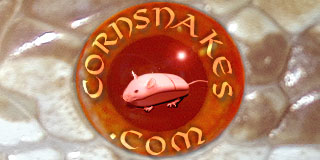"My friend from the forum believes that the high stores of fat hasten the reproduction of certain bacteria in the Boas digestive system- these bacterias exist there naturally, but balanced. When this balance is undone, the snake is harmed."
That was from the other thread - I was wondering what qualifications your friend has, or is this just a guess? I've never heard of "fat poisoning" before, in any animal, and I'd be interested to learn more. I do agree it's unhealthy though, it's something I fear and not just because it wrecks breeding possibilities.
He has none, save his own experience(which is quite extensive) and consult with veterinarians...
Bear in mind, the whole concept of genetics in reptiles is also the product of observation and conclusion making... no genetic experiment was conducted in a lab... we also assume that "simple recessive" morphs originate from a single pair of genes rather than several on the same chromosome for example.... it's a hobby, which sadly doesn't attract too much scientific attention.
http://www.basicallyboas.com/whats_new.html
I disagree though- high deposits of fat cause a multitude of issues in all living, breathing beings- in the form of metabolism issues, heart problems and so forth...
I believe that it is quite likely for a Boa Constrictor, which leads a semi-arboreal life style, to be fat-intolerant as high amounts of fat are very uncommon in the wild- especially amounts that exist in these rats due to lab-breeding:
http://www.criver.com/en-US/ProdServ/ByType/ResModOver/ResMod/Pages/ZuckerRat.aspx
Fat does indeed provide a very fertile breeding ground for bacteria... I think it's quite sensible...
It -could- always be the result of something else... just like many things in the hobby though... we do with what we have. Vets agree that it's a possible explanation... but there's no way without testing to say it's true- just like many of the hobby's views on genetics etc...
I also wanted to add though- there's a solid base of consistency in the linked cases of feeding rats that had high desposits of fat(Zucker rats, or het, retired breeders who develop many fat reserves and so on) and the waxing of color, regurge and loss of color- you can google it around, you'll see a pattern emerging...
